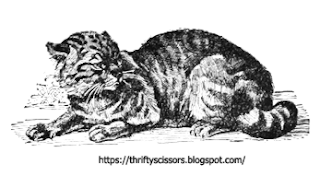Locust, the name applied rather loosely to several insects related to the grasshoppers. In the United States, the cicada, harvest fly, is called a locust, while the real locust of that country is known as the red-legged grasshopper.
12 More Facts About Locust:
- The hind legs of the locusts are large and powerful, so that they have great power of leaping, but their antennae are shorter than those of true grasshoppers.
- They make their peculiar "notes" by drawing their hind legs across their wing covers.
- When flying they produce sounds by rubbing their front and hind wings together.
- The Rocky Mountain locust breeds west of the Mississippi River and east of the Rocky Mountains, selecting places along river bottoms or in grassy places of the mountains in the northern part of the region mentioned.
- The female lays twenty-five or more eggs, cementing them carefully together and covering them with a case, or cocoon, which she buries in the sand.
- From the first, the young resemble their parent, and after frequent molting they reach their full size in about seven weeks.
- On reaching maturity locusts gather in flocks and begin incredibly long migrations, with an apparent definiteness of purpose and regularity of movement that no other insect ever shows.
- Sometimes they appear in such vast numbers as almost to obscure the light of the sun; toward night or on cloudy days they settle down on the earth and devour everything green they can find. Sometimes within a few hours whole acres of flourishing vegetation have been destroyed.
- In 1874 the locusts overran the whole territory west of the Mississippi, and it is estimated that $50,000,000 would not cover the damage they did.
- The next year 750,000 people were made destitute or suffered severely in Kansas, Nebraska and Missouri. Since that time, though there have been numerous flights of locusts, they have not appeared in such destructive numbers, and it is thought that the cultivation of the land and the destruction of their breeding places have made impossible anything of the kind in the future.
- Migratory locusts are found also in Asia and Africa, where their flights have been as destructive as those of the locusts in America.
- Arabs and other people of the East frequently use the dried insects as food.
The Great North American Locust Plague by MinuteEarth












